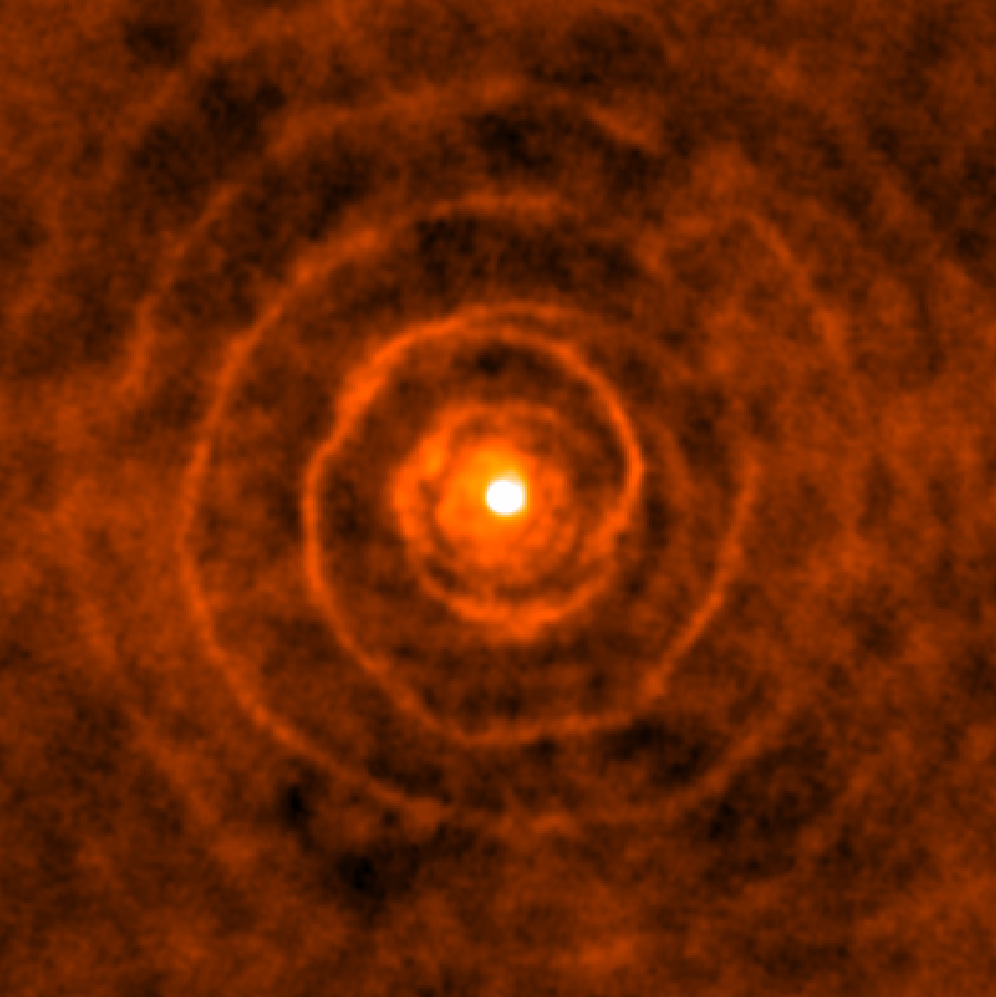Stellar evolution
As nuclear fuel deep within a star is burned, instabilities occur. These instabilities may result in a rapid increase in heating, which may be seen as mass loss driven by a thermal pulse in Asymptotic Giant Branch (AGB) stars. Nuclear-processing enriches the outer envelopes of the star, and as dense warm material enriched in C, N, O, P, S and Si deep in the star cools, condensation produces stardust. The dust is accelerated outward during pulses and drags gas along with it into the circumstellar envelope, which may be imaged in dust continuum or in the lines of molecules such as CO, SiO and their isotopic variants. Thus, ALMA provides a sensitive probe of not only the physics of the stellar matter but of its nucleosynthetic origins. ALMA's high resolution can identify unknown components of stellar systems while its spectral line sensitivity can provide insight into isotopic variations within lost-mass shells and into dust formation processes near the stellar photosphere.
After the outer shell of the star is lost, the hot central stellar remnant is exposed, and its energetic radiation begins to ionize the remnant circumstellar shell, creating a planetary nebula. Many planetaries are markedly asymmetric, with material flowing outward at high velocity in the polar direction, and at lower velocities equatorially. Often a region of neutral gas and dust is found in the equatorial plane. ALMA provides excellent high spatial and kinematic sensitivity for imaging these regions to investigate the origin of planetary nebulae.
ALMA millimeter observations of supernovae complement observations at other wavelengths in important ways. As the radio spectrum of a supernova evolves, the higher peak flux density is expected to occur earlier in the millimeter wavelength regime. Thus at millimeter wavelengths, one might observe supernovae more promptly and further away than at longer wavelengths. Very bright SNII could easily be detected and monitored with ALMA up to a distance of 350 Mpc.
Figure: ALMA image of the CO emission from the molecular shell around the AGB star LL Pegasi and its stellar companion (Kim et al. 2017, Nature Astronomy, 1, 60).
Below is a table of relevant ALMA Science Highlights

